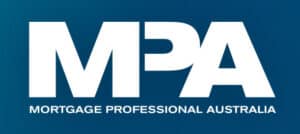Source: MPA
By Ryan Smith
03 Dec 2020
Japanese crowdfunding platform Crowd Bank is looking to break into the Australian market through a funding deal with alternative lending platform Zagga.
Crowd Bank’s initial investment of $50m will facilitate its expansion into a third international market, following previous investments in the US and Hong Kong. Crowd Bank is Japan’s third-largest crowdfunding platform, with funds under management of $260m, total loans of $1.5bn, and 34,000 investors as of November.
“Australia is a marvelously attractive environment for investors driven by political stability, government efficiency and a sound fiscal balance sheet, and we intend to invest aggressively in this market,” said Kaneda Hajime, president of Crowd Bank. “We believe the most important element of success, in terms of finding a good investment destination, is to collaborate with a strong local partner that we can trust. In Zagga, we are partnering with a well-established loan manager with a proven track record, good corporate governance, advanced risk management and a focus on transparency.”
Crowd Bank’s investment will support Zagga’s growth plans for 2021. The lending platform posted strong performance in 2020, with $162m in loan originations – a 42% spike from 2019.
“There is huge opportunity for continued growth in the Australian alternative lending market, which is being recognised by global investors like Crowd Bank,” said Peter Clare, co-founder and chairman of Zagga. “We’re very pleased to be embarking on the next phase of our growth journey with Crowd Bank, and continuing to support Australian businesses with flexible funding to help them realise their own growth objectives.”
Zagga’s investor base includes several financial institutions, investment managers and family offices in addition to Crowd Bank. The platform also gets funding from the Zagga Feeder Fund, an internal “warehouse” that has grown by 40% since July. Zagga aims to grow total originations by more than 33% next year, targeting an active book of more than $250m.
“We have a flexible platform that allows us to meet a range of needs and is therefore very compelling to many institutional-like investors,” Clare said. “In addition to the structure for Crowd Bank, which is tailored to their regulatory needs and structures as a fractional investment fund, we have also outsourced our platform through two white-label arrangements, another key area of growth for our business.”
Australia’s alternative lending industry saw growth throughout 2020 as many traditional banks tightened lending guidelines in response to the COVID-19 pandemic. Reserve Bank of Australia data from September suggests that demand for bank-based finance is low, while the use of non-traditional finance – while still low in terms of overall funding for small and medium-sized businesses – is increasing.
“We’ve seen phenomenal growth throughout 2020 as more businesses turned to alternative finance due to banks effectively closing their doors to many of their existing clients, including SMBs,” said Alan Greenstein, CEO of Zagga. “A large majority of our new borrower clients are those who historically have had longstanding relationships with traditional lenders, but who are increasingly seeking the flexibility, speed and transparency offered by alternative lenders like Zagga.”
Australia has the largest non-traditional finance market in the Asia Pacific region after China, and the seventh largest globally as of 2018. Australia has a 31.6% market share in Asia Pacific, totaling US$1.15bn. About 60% of funding for finance provided by non-traditional finance entities in Australia is provided by institutional investors, compared to a global average of 50%.
“With a strong regulatory framework and competitive returns, the Australian alternative finance market offers an attractive investment for institutional investors, and we expect to see growing interest from international players in the market,” Greenstein said.
Questions?
Look here.
Traditional lending refers to the process of obtaining financial resources from traditional banking institutions, such as banks and credit unions. Banks accept deposits from customers and use these deposits, along with other sources of funds, to provide loans and credit to borrowers.
Alternative lending encompasses a wide range of sources outside of traditional banks and can include private investors, hedge funds, peer-to-peer lending platforms, and other alternative, non-bank finance providers such as Zagga.
Banking sector structures and regulatory intervention over the past 10 years have created a funding gap as traditional major bank lenders have been unable to meet the needs of quality borrowers.
The traditional major bank lenders tend to have more rigid lending criteria due to:
- Australian Prudential Regulation Authority (APRA) regulation that restricts a traditional major bank lender’s ability to provide flexibility on their loan terms, and therefore may not always be able to meet a borrower’s specific requirements.
- Basel III regulatory framework reforms (which required traditional major banks to maintain certain leverage ratios and keep certain levels of reserve capital on hand). This resulted in Australian traditional major bank lenders withdrawing further from commercial real estate (CRE) debt as they focused on other parts of their funding operations (e.g. residential mortgages). Whilst traditional major bank lenders are still funding CRE transactions, it has been far more suppressed and on more restrictive terms.
This tightening by traditional major bank lenders means quality traditional major bank clients are seeking alternative funding solutions through alternative and non-bank lenders as they offer considerably faster turnaround times, more flexible lending criteria, and bespoke solutions.
At Zagga, we pride ourselves on our ability to provide tailored solutions to meet the unique needs of each borrower and deliver a commercial, flexible, and responsive outcome, whilst always maintaining our rigorous and thorough assessment of the loan.




